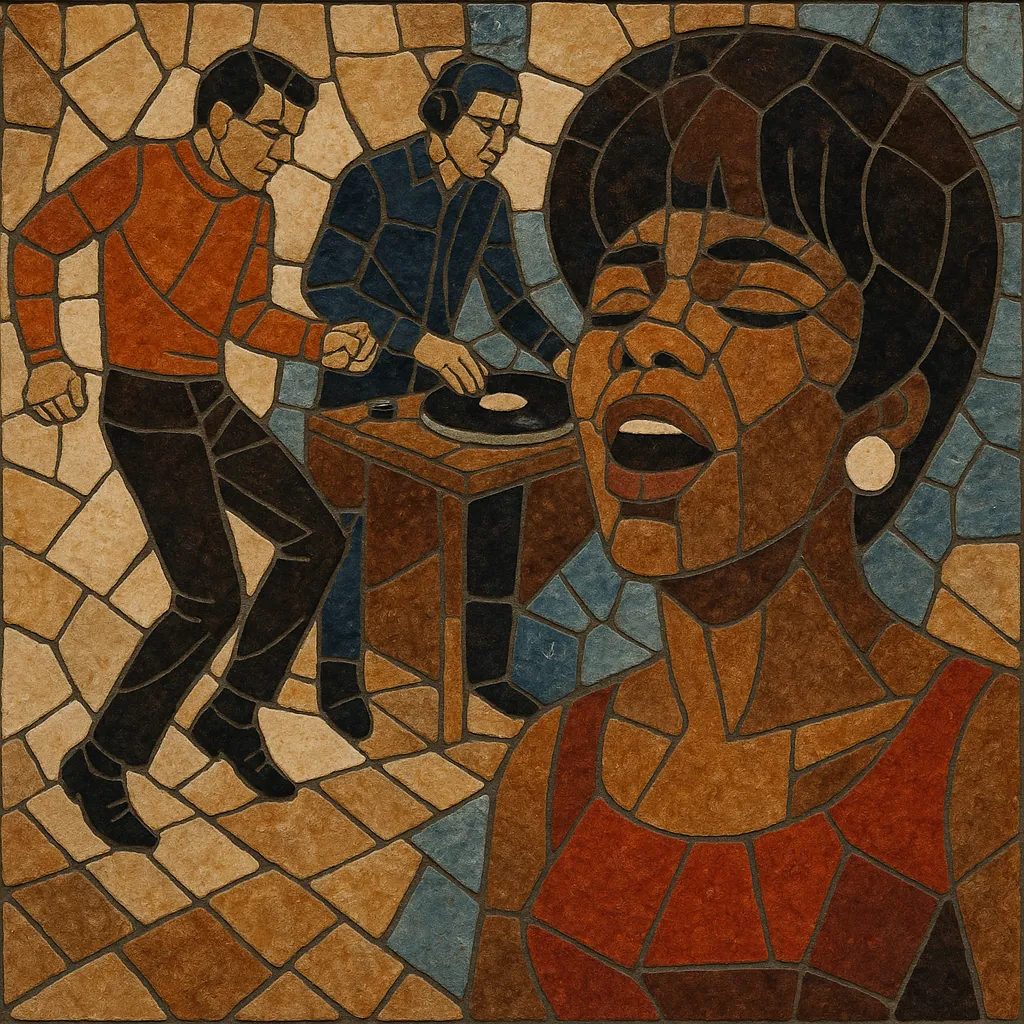
Northern soul is a British dance and record‑collecting movement that champions fast, dramatic, and often obscure American soul singles from the mid‑1960s. Rooted in the mod scene, it favors Motown‑influenced 4/4 "stompers" with driving backbeats, tambourine, handclaps, punchy horns, and soaring vocals.
Rather than a studio-born genre, northern soul is a club culture defined by DJs, dancers, and rare 7-inch singles. Its identity centers on high-tempo soul songs (typically 120–135 BPM), euphoric choruses, and romantic or inspirational themes that keep dancefloors moving through all‑night sessions.
Northern soul emerged in Northern England as the mod scene evolved toward rarer, faster American soul records. Clubs like the Twisted Wheel (Manchester) began spotlighting lesser-known Motown-adjacent 45s on labels such as Okeh, Ric-Tic, and Cameo-Parkway—prioritizing speed, energy, and drama.
The movement crystallized around legendary all-nighters: Wigan Casino (Wigan), Blackpool Mecca, and The Golden Torch (Stoke-on-Trent). DJs such as Ian Levine, Russ Winstanley, and Richard Searling drove the culture of exclusivity—hunting for obscure U.S. pressings, spinning advance acetates, and even promoting reissues or commissioned covers when originals were unattainable. Dance styles became athletic and expressive, with spins, backdrops, and shuffles performed on talc-dusted floors to keep traction minimal.
Northern soul prized mid‑60s, uptempo, Motown‑styled arrangements with emphatic backbeats, sweeping strings and horns, and impassioned lead vocals supported by tight backing groups. Many scene-defining tracks were commercial obscurities in the U.S. but became anthems in the U.K. through DJ discovery and word of mouth.
By the late 1970s, disco and later electronic dance styles shifted mainstream tastes, while a portion of the scene leaned toward smoother, contemporary "modern soul." Even so, northern soul’s all‑nighter DJ culture, collector ethos, and love of high‑energy soul helped shape British club traditions and influenced later rare‑groove, acid jazz, and pop revivals. The scene continues through dedicated events, reissue labels, and multigenerational dancers who keep the canon alive.
Aim for an uptempo 4/4 groove in the 120–135 BPM range. The drum pattern should be crisp and dance-forward: a strong backbeat on 2 and 4, with tambourine or handclaps reinforcing the off-beats for extra drive.
Use a classic 1960s soul palette: tight rhythm section (drums, bass, electric guitar, piano), tambourine, handclaps, bright horns (trumpets, saxes), and strings for lift in pre-choruses and choruses. Keep arrangements concise (2:30–3:00) and impactful—intro hook, two compact verses, and a big chorus.
Write catchy, diatonic progressions (e.g., I–vi–IV–V or I–IV–V) with clear key centers and occasional modulations for lift. Melodies should be urgent and emotive, soaring in the chorus, and supported by call-and-response backing vocals.
Favor romantic, motivational, and heart-on-sleeve themes—overcoming heartbreak, dancing through the night, or declaring devotion. Vocal delivery should be passionate and upfront, with natural grit and conviction.
Emulate 60s production aesthetics: punchy mono or narrow stereo, minimal ambience, and prominent rhythm tracks. If performing as a DJ, sequence high-energy "stompers" with short, impactful intros; keep transitions tight to sustain the dancefloor, and consider period-appropriate edits that extend breaks or choruses for dancers.

